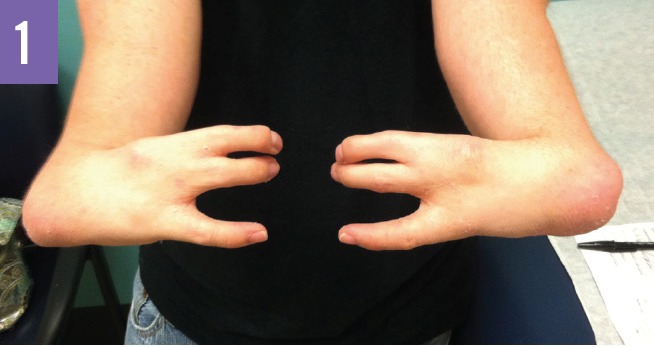
Over View
What is ulnar longitudinal deficiency?
Children with ulnar longitudinal deficiency are born with their wrist in a fixed, bent position toward the little finger side of the hand. The fingers and thumb may also be affected. Other muscles and nerves in the hand may be unbalanced or missing. This condition is sometimes called ulnar dysplasia or ulnar club hand.
There are two bones in your baby’s forearm: the ulna, on the pinky side of the arm, and the radius, on the thumb side. Ulnar longitudinal deficiency happens when the ulna and other soft tissues of the hand do not fully develop.
What are the symptoms of ulnar longitudinal deficiency?
There are four types of ulnar longitudinal deficiency based on the severity of the condition. Your child’s symptoms will depend on the type they have. If they have a mild form, their wrist may only bend out slightly. If they have a more severe type, their forearm may be significantly short and bowed outward toward their pinkie finger. Their hand and fingers may also be affected.
Types of ulnar longitudinal deficiency
Type 1 is the mildest form of ulnar longitudinal deficiency. The ulna is slightly smaller than normal and the hand may have slight differences. This type causes few, if any, problems with a child’s development.
Type 2 is the most common type of ulnar longitudinal deficiency. In children with this type, the ulna is partially missing and there is an abnormal bar of fibrous tissue called an anlage connecting the end of the ulna to the wrist. A child with this type may have some differences in their fingers or thumb, but their elbow is functional and stable.
Type 3 ulnar longitudinal deficiency means a child does not have an ulna and their elbow is unstable. Many also have differences in the hand and wrist.
Type 4 means a child is missing the ulna and has an abnormal connection between their humerus (the long bone in the upper arm) and radius. This connection, called a radiohumeral synostosis, fixes the elbow in one position. The forearm is significantly bowed and the hand and fingers are often affected as well.